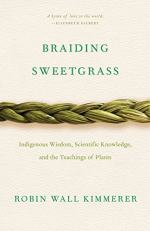
|
| Name: _________________________ | Period: ___________________ |
This test consists of 15 multiple choice questions and 5 short answer questions.
Multiple Choice Questions
1. What does the author say "A gift creates" in "The Gift of Strawberries" (38)?
(a) "Ongoing relationship."
(b) "A solution to problems."
(c) "Eternal indebtedness."
(d) "Bitterness."
2. Who wrote the book Grandmothers of the Light?
(a) Johann Goethe.
(b) Thomas Berry.
(c) Paula Gunn Allen.
(d) Bruce King.
3. What is said to be a "radical proposition" in a consumer society in "Allegiance to Gratitude" (136)?
(a) Contentment.
(b) Gift-giving.
(c) Detachment.
(d) Gratitude.
4. The author states in "The Gift of Strawberries," "Gifts exist in a realm of" what (35)?
(a) "Happiness."
(b) "Humility and mystery."
(c) "Love."
(d) "Forgiveness and negotiation."
5. How many times does the author say her ancestors were "removed" in the span of a single generation in "The Council of Pecans" (21)?
(a) 2.
(b) 3.
(c) 9.
(d) 5.
6. What color bedroom was among the author's daughters' list of demands for a new home in "A Mother's Work"?
(a) Blue.
(b) Pink.
(c) Purple.
(d) Red.
7. According to the author in "Skywoman Falling," sweetgrass is one of how many sacred plants of her people?
(a) 10.
(b) 6.
(c) 4.
(d) 9.
8. How does the author say trees communicate with each other in "The Council of Pecans"?
(a) Via electrical pulses.
(b) Via whispers.
(c) Via pheromones.
(d) Via ESP.
9. Who painted Moment in Flight?
(a) Bruce King.
(b) John Singer Sargent.
(c) Thomas Berry.
(d) Lewis Hyde.
10. What ecotheologian wrote, "We must say of the universe that it is a communion of subjects, not a collection of objects" (74)?
(a) Bruce King.
(b) Johann Goethe.
(c) Thomas Berry.
(d) Lewis Hyde.
11. What kind of food did the author's pet ducks take to in the winter, according to her narrative in "A Mother's Work"?
(a) Pig food.
(b) Dog food.
(c) Chicken food.
(d) Cat food.
12. What does "Maple Sugar Moon" translate to in the language of the author's people?
(a) Wiingaashk.
(b) Zizibaskwet Giizis.
(c) Puhpowee.
(d) Ode'mini-giizis.
13. Where did the author go kayaking after seeing off her youngest daughter to college in "The Consolation of Water Lilies"?
(a) Williams Pond.
(b) Kacamo Pond.
(c) Lewiston Pond.
(d) Labrador Pond.
14. What American elm does the author describe having been named the champion for its species in "Asters and Goldenrod"?
(a) The Wethersfield Elm.
(b) The Parliament Hill Elm.
(c) The Louis Vieux Elm.
(d) The Glencorradale Elm.
15. What is the "boom and bust cycle" of nut trees called, according to the author in "The Council of Pecans" (23)?
(a) Post fruiting.
(b) Forage fruiting.
(c) Mast fruiting.
(d) Mass fruiting.
Short Answer Questions
1. What is the animate form of "to be," in the author's people's language?
2. Tahawus is the Algonquin name for what mountain, according to the author in "An Offering"?
3. What is described in maple trees as "the enzyme responsible for cleaving large molecules of starch stored in the roots into small molecules of sugar" (85)?
4. What is the address called that the children recite at the Onondaga school described by the author in "Allegiance to Gratitude"?
5. Along what river does the author describe her grandfather collecting pecans in "The Council of Pecans"?
|
This section contains 483 words (approx. 2 pages at 300 words per page) |

|




